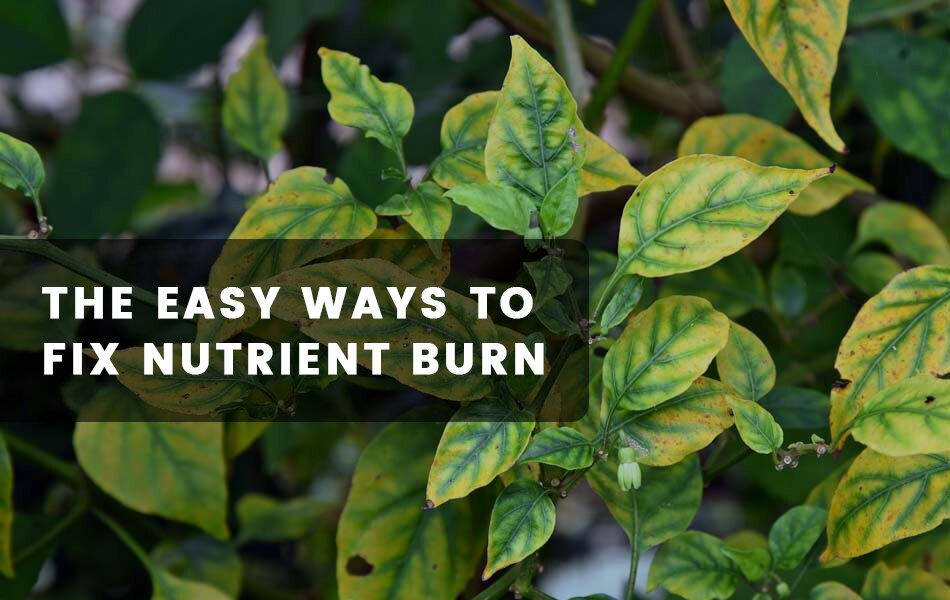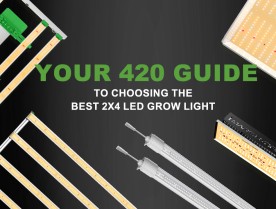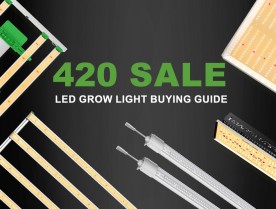
Plants grown in the wild can generally survive without nutrients or fertilizer, but houseplants or potted plants are very different. Because the soil is stagnant, they need routine feeding to grow healthily and happily. But there is such thing as “too much of a good thing”. Giving your plants too many nutrients can cause nutrient burn. Keep reading to learn how to spot nutrient burn and how to fix it.
What is Nutrient Burn?
Nutrient burn is what happens to potted houseplants when they are overfed with fertilizer or bottled nutrients. Because the plants can’t handle the excess, the nutrients cause root and leaf damage.
When this happens, the plant is unable to take in as much water and cannot photosynthesize properly. This can stunt growth, cause leaves to fall off, and, in extreme circumstances, kill the plant entirely.

How to Spot Nutrient Burn
Spotting nutrient burn early is essential if you want to fix the problem and save your plant. Firstly, your plant can only be suffering from nutrient burn if you’ve recently fed it fertilizer or bottled nutrients in the last 1-4 weeks.
Secondly, your plant will start showing visual signs of damage. These appear because the plant is desperately trying to remove the excess nutrients from its soil and roots.
The visual signs to look out for to spot nutrient burn on plants are:
- Bending or curling leaf tips
- Leaf tips turning brown and crispy
- Burnt or scorched leaves
- Leaves turning an unusually vibrant green color
- Leaf yellowing, starting with the tips before spreading to the entire leaf
It’s easy to confuse nutrient burn symptoms with overwatering, especially when the leaves are yellowing. However, the difference between overwatering vs nutrient burn is that the leaf tip will start yellowing first, before spreading to the rest of the leaf. Whereas overwatering your plant can cause the entire leaf to become yellow.
How to Fix Nutrient Burn in Plants
Fixing nutrient burn in plants is relatively simple, provided you’ve spotted the problem early enough and work quickly to resolve the issue. You’ll need to work differently depending on whether your indoor or greenhouse plant has nutrient burn from hydroponic vs soil growing.
How to Fix Nutrient Burn in Hydroponic Plants
Fixing nutrient burn in plants grown in hydroponic grow tents is quick and easy. Unfortunately, leaves already affected by nutrient burn are unsavable, so you’ll need to remove these. The water should be salvageable and, provided you’ve spotted the nutrient burn early enough, your plants should survive.
Here’s how to fix nutrient burn in hydroponic plants:
- Remove dead or infected leaves using clean shearers
- Pour pH-balanced water into the containers to dilute the solution
- Use a pH pen to test the nutrient levels
- Continue diluting the water gradually until it reaches an optimal level
If your water is beyond saving because you’ve used the wrong type of fertilizer for your plants, change the water entirely and start again.
How to Fix Nutrient Burn in Soil
Saving soil-grown plants from nutrient burn can be slightly more difficult. You can save them if you catch the issue early enough, but there is a chance indoor plants won’t recover,especially if the roots are severely damaged.
Here’s how to fix nutrient burn in soil:
- Cut the dead or infected foliage with clean shearers
- Take your potted plant outdoors or place it in a sink or bath
- Flush the plant with pH-balanced water
- Use a pH pen to test the soil and ensure its an optimal level again
- Reapply a suitable amount of nutrients
- Leave the plant in a warm place to help the soil dry out
- Avoid watering again until the soil dries out (depending on the watering needs of your plant)
Remember, some indoor plants won’t survive flushing if they are not properly cared for in the days and weeks afterward. Soil can become moldy or infested with fungal gnats if it’s not dried out properly, or the plant can experience negative symptoms from overwatering. You can prevent this by carefully monitoring your plants’ soil dryness and watering needs.
How to Prevent Nutrient Burn
Preventing nutrient burn is very simple. Researching the amount of nutrients your plants need, the type of fertilizer, and how regularly they need feeding is the first step to preventing nutrient burn.
To prevent nutrient burn in plants, you’ll need to:
- Research what your plant needs
- Only feed your plants the correct amount of nutrients when needed
- Use a pH pen to test the nutrient levels in water or soil before feeding
When growing plants hydroponically or in soil, it’s important to practice proper plant maintenance to prevent nutrient burn and other issues with your plants, like lack of humidity or inadequate warmth.
If you’re growing your plants hydroponically, good plant care starts with knowing how to germinate seeds in the best way. It’s also important to ensure your grow tent has good circulation and sufficient lighting, whether that’s from LED Grow lights or natural light.
Summary
To summarize, nutrient burn is easy to fix in plants grown hydroponically or in soil. However, you need to act fast to save your plants from entire extinction after nutrient burn. Otherwise, the plants will slowly die in the excess of fertilizer. Preventing nutrient burn is very easy, provided you research what your plants need and have the right plant equipment.






